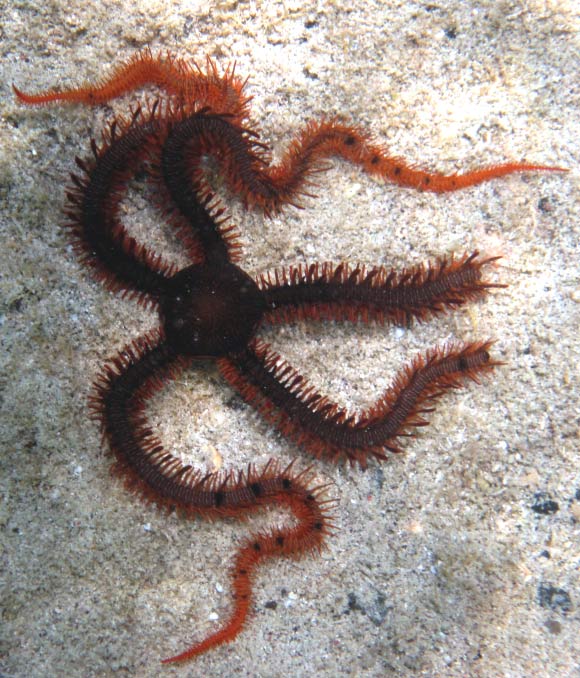The red brittle star (Ophiocoma wendtii), a relative of starfish that inhabits coral reefs from Bermuda to Brazil, first captured scientific attention more than three decades ago thanks to its dramatic change in color between day and night and its strong aversion to light. In 2018, researchers demonstrated that the red brittle star is covered in thousands of light-sensitive cells, but the exact behaviors they control remained a mystery. A new study, published in the journal Current Biology, shows that the marine animal is able to see visual stimuli, and that its signature color-change might play an important role in enabling vision.
“It’s a very exciting discovery,” said Dr. Lauren Sumner-Rooney, a researcher at the Oxford University Museum of Natural History and the Museum für Naturkunde at the Leibniz Institute for Evolution and Biodiversity Science.
“It had been suggested 30 years ago that changing color might hold the key to light-sensitivity in Ophiocoma, so we’re very happy to be able to fill in some of the gaps that remained and describe this new mechanism.”
Dr. Sumner-Rooney and her colleagues ran hundreds of behavioral experiments to test the ‘eyesight’ of Ophiocoma wendtii.
“These experiments gave us not only the first evidence that any brittle star is able to ‘see,’ but only the second known example of vision in any animal lacking eyes,” Dr. Sumner-Rooney said.
Ophiocoma wendtii were able to seek out areas of contrast, which the researchers think may mimic structures that could offer shelter from predators.
Although it appears that their vision is very coarse, on the crowded tropical reefs disturbed brittle stars never have to look too far to make a dash for the nearest cover.
However, an unexpected discovery raised new questions about how this visual system worked.
“We were surprised to find that the responses we saw during the day disappeared in animals tested at night, yet the light-sensitive cells still seemed to be active,” Dr. Sumner-Rooney said.
The scientists set about trying to identify what caused this dramatic shift in behavior, eliminating possible factors such as loss of motivation and low light intensity making vision too difficult.
The one they couldn’t rule out was Ophiocoma wendtii’s characteristic change in color, from a deep red during the day to beige at night.
Previously, the team showed that another closely related brittle star, Ophiocoma pumila, was also covered in light sensors, but it doesn’t exhibit the same color change. Curiously, this paler species also failed their eye-test.
Combining a suite of techniques, the study authors reconstructed digital models of individual light-sensing cells in the two species, with and without Ophiocoma wendtii’s dark daytime pigmentation.
They demonstrated that, during the day, the pigment restricted light reaching the sensors to a narrower angle that corresponds to their hypothesized visual resolution.
Without this pigment — in Ophiocoma pumila, or during the night in Ophiocoma wendtii — light could reach the sensors from a much wider angle, making vision impossible.
_____
Lauren Sumner-Rooney et al. Extraocular Vision in a Brittle Star Is Mediated by Chromatophore Movement in Response to Ambient Light. Current Biology, published online January 2, 2020; doi: 10.1016/j.cub.2019.11.042








